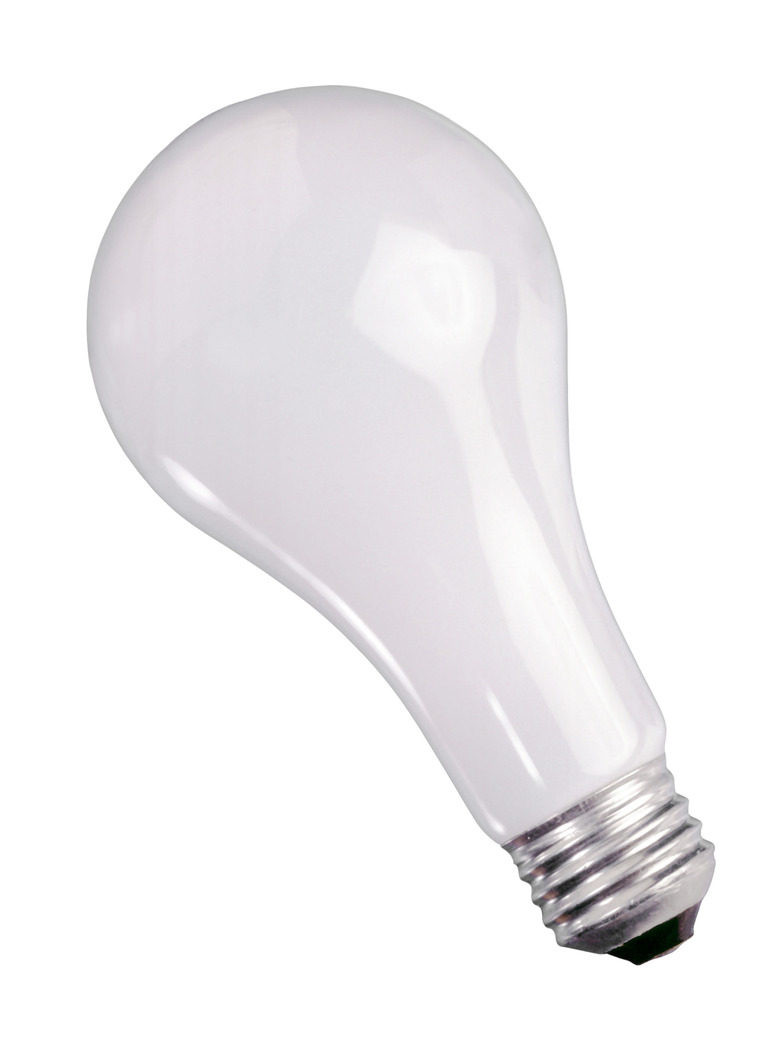How To Compare LED Light Output To Incandescent Bulbs
Changing a light bulb is one of the simplest steps most households can take to save energy. According to Energy Star, if each household changed just one bulb, the reduction in greenhouse gas emissions would be the equivalent of taking 2 million cars off the road. Light-emitting diodes are one of the many energy-saving alternative lights now available. Although expensive, these bulbs save you money by lasting up to 20 years and using only a fraction of the energy that an incandescent light does. Shopping for LEDs can be confusing until you learn how to compare their light output compared to other bulbs.
Step 1
Understand what is meant by lumens. Traditional bulbs are measured in watts, but because LEDs use so little energy, wattage is not an indication of brightness. Lumens are a measure of brightness and are now stated on most packages of bulbs.
Step 2
Determine the wattage of your current bulbs. Before you purchase LEDs to replace your incandescent bulbs, you'll need to know the wattage of your old bulbs. This number is printed either on the top of the bulb or along the base of the bulb.
Step 3
Convert your old bulb's wattage into lumens. This can be calculated if you happen to know your bulb's lumens per watt, using this equation: Lumens = Watts x lumens per watt. However, because lumens per watt vary for both incandescent and LED lights, it's easier to use a wattage-to-lumens comparison chart. Since most household bulbs are 40W, 60W, 75W or 100W, you may be able to memorize their equivalent lumens. Some of the common wattages vs. lumens for incandescent bulbs are: 40W equals 450 lumens, 60W equals 800 lumens, 75W equals 1100 lumens and 100W equals 1600 lumens.
Step 4
Examine the label of the LED bulbs at the store. Bulb packaging now has a Lighting Facts label to inform you about the bulb's lumens, wattage used, lifespan and cost to operate. Lumens are listed under Brightness. Find a bulb that matches the lumens you need to replace your incandescent bulbs.
TL;DR (Too Long; Didn't Read)
Most incandescent bulbs emit a warm, yellow light, while most LEDs produce a white light. If this is a concern, check the Lighting Facts label for the Light Appearance information.
Look for Energy Star approved LEDs. These lights produce a high-quality light over their lifetime and are more reliable than nonapproved LEDs.
Warning
Never exceed the maximum wattage stated on your light fixture.
Cite This Article
MLA
Painter, Tammie. "How To Compare LED Light Output To Incandescent Bulbs" sciencing.com, https://www.sciencing.com/compare-led-light-output-incandescent-bulbs-3061/. 24 April 2017.
APA
Painter, Tammie. (2017, April 24). How To Compare LED Light Output To Incandescent Bulbs. sciencing.com. Retrieved from https://www.sciencing.com/compare-led-light-output-incandescent-bulbs-3061/
Chicago
Painter, Tammie. How To Compare LED Light Output To Incandescent Bulbs last modified March 24, 2022. https://www.sciencing.com/compare-led-light-output-incandescent-bulbs-3061/
